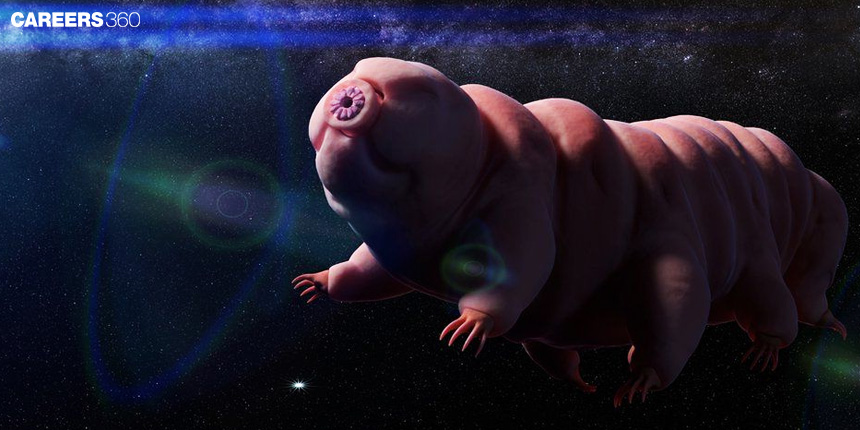Tardigrades: Nature's Indestructible Microscopic Creatures
Tardigrades, often referred to as water bears or moss piglets, are extraordinary microscopic creatures tiny, water-dwelling animals measuring between 0.1 to 1.5 millimeters in length, have garnered fame for their exceptional ability to endure harsh environments that would be lethal to most other life forms. These remarkable creatures, first discovered in 1773 by German zoologist Johann August Ephraim Goeze, belong to the phylum Tardigrada, which consists of over 1,300 known species. They can be found in a variety of habitats, from moist moss and lichen to the deep sea and even the highest mountain ranges. What sets tardigrades apart from other microorganisms is their resilience—an ability to withstand extreme conditions, including extreme temperatures, radiation, and even the vacuum of space.
This Story also Contains
- Tardigrade Biology
- Tardigrades in Science and Technology
- Ethical and Environmental Considerations

Tardigrade Biology
Tardigrades possess a unique set of biological adaptations that enable them to thrive in diverse environments. Understanding their biology is crucial to appreciating their exceptional abilities.
Structure and Anatomy
- Tardigrades have a barrel-shaped body covered in a protective cuticle that provides structural support and protection.
- They typically have four pairs of stubby legs, each ending in sharp claws, which allow them to cling to surfaces.
- A simple digestive system and a tubular mouthpart enable tardigrades to feed on plant cells, bacteria, and other microorganisms.
- Their brain consists of ganglia connected by nerve cords, allowing them to sense and respond to their surroundings.
- Tardigrades reproduce through eggs or a process called parthenogenesis, where females can reproduce without fertilisation.
Cryptobiosis: The Key to Survival
One of the most fascinating aspects of tardigrades is their ability to enter a state known as cryptobiosis. In this state, they can suspend their metabolism and virtually shut down all biological activity. This extraordinary adaptation allows them to survive extreme conditions that would be fatal to most life forms.
- When subjected to desiccation (extreme drying), tardigrades lose up to 97% of their body water, entering a cryptobiotic state.
- They can endure extreme temperatures, ranging from as low as -272°C (-458°F) to as high as 150°C (302°F), by entering cryptobiosis.
- Tardigrades are capable of withstanding pressures more than six times those of the deepest ocean trenches.
- In response to high doses of ionising radiation, they activate their cryptobiotic state, shielding them from DNA damage and cell destruction.
- Tardigrades can even survive in the vacuum of space, enduring the harsh conditions found beyond Earth's atmosphere.
Tardigrades in Science and Technology
The resilience of tardigrades has garnered significant interest from scientists and researchers, leading to various potential applications in science and technology.
Medical Research
- The study of tardigrades' cryptobiotic abilities holds promise for improving organ preservation and tissue engineering.
- Their capacity to withstand extreme conditions may inspire advancements in cryopreservation techniques for cells and tissues.
Astrobiology
- Tardigrades' ability to survive in space-like conditions has implications for astrobiology and the search for extraterrestrial life.
- Researchers are investigating the potential for tardigrades to withstand interplanetary travel, making them intriguing subjects for future space missions.
Environmental Monitoring
- Tardigrades are used as bioindicators for environmental quality assessment, especially in assessing the health of moss and lichen habitats.
- Their presence or absence in a given environment can provide valuable insights into ecosystem health.
Ethical and Environmental Considerations
While tardigrades offer numerous opportunities for scientific and technological advancements, ethical and environmental concerns must also be addressed.
Conservation
- Some tardigrade species are vulnerable to habitat destruction and climate change, necessitating conservation efforts to protect their ecosystems.
- The loss of these remarkable creatures could result in the loss of potential scientific discoveries and ecological stability.
Ethical Use in Research
Researchers must consider ethical guidelines when conducting experiments involving tardigrades to ensure their well-being and prevent unnecessary harm.
Tardigrades continue to captivate scientists and nature enthusiasts with their remarkable abilities. From their unique biology and cryptobiotic state to their potential applications in science and technology, these tiny animals are rewriting our understanding of survival and adaptation. As we continue to unlock the secrets of tardigrades, we must ensure that our exploration benefits both science and the environment. These tiny, resilient organisms remind us of the vast wonders that exist in the microscopic world and inspire us to preserve and protect them for generations to come.
Also check - Fun Maths Puzzles: Attempt These To Hone Your Number Skills
Applications for Admissions are open.
As per latest syllabus. Physics formulas, equations, & laws of class 11 & 12th chapters
JEE Main Important Chemistry formulas
Get nowAs per latest syllabus. Chemistry formulas, equations, & laws of class 11 & 12th chapters
JEE Main high scoring chapters and topics
Get nowAs per latest 2024 syllabus. Study 40% syllabus and score upto 100% marks in JEE
JEE Main Important Mathematics Formulas
Get nowAs per latest syllabus. Maths formulas, equations, & theorems of class 11 & 12th chapters
